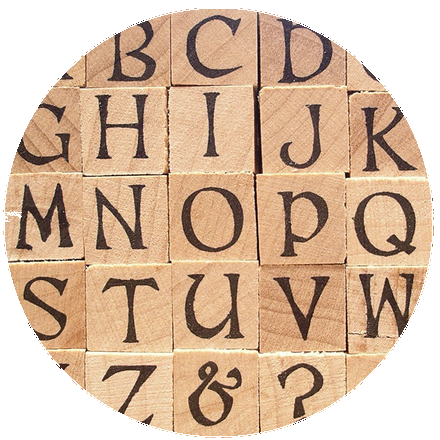August 2, 2015
Statistics teaching ideas based on ….. the alphabet!
This post focuses on randomness, simulations and probability.
10 quick ideas……
- Choose five letters (e.g. A, B, D, N, U) and display these together. For the rest of these ideas to work, choose letters that can go together to make three letter words (avoid certain words!). Ask students to randomly select one of the letters and write this down.
- Ask students to share honestly how they selected their letter – you should find they do use a reason e.g. the first letter of their name, or they choose the one they think no one else will select. Discuss the difference between selecting something and randomly selecting something, and get students to come up with examples for each e.g. selecting which lolly to eat based on which one you like vs putting your hand into a bag and choosing a lolly without looking.
- You could discuss more how humans are not that great at generating or accepting randomness. There are some great youtube videosand websites with ideas for activities to explore this. A nice example is this decision by Spotify to change their algorithm for shuffling songs – their article includes some nice visualisations to support their discussion. You could also explore how the word or concept of random is used in everyday language, or in particular, in design (like my example below).

- Display the class results as a dot plot (with the letters along the horizontal axis). So what are we looking for in the plot? Ask the students – are these results what you expect? Some students may discuss expecting to see an equal number of selections for the five letters, others may expect to see uneven results because “it’s random”, others may have other ideas based on not trusting that other students selected their letters randomly. Try to get as much out of your students as possible so you know what they are thinking 🙂
- We can’t use the results to prove that students selected their letters randomly or not, but we can see if the results look like what we’d get if a random process was used. Students may not know what they are looking for, and for small samples like a class, we actually expect quite a bit of variation. Use a simulation tool like this one to simulate randomly selecting n letters with replacement from the five letters you used (n being the size of your class). Discuss with the class whether their results look similar or different to the simulated results.

- Make five large cards with each of the five letters on them. Select three students from the class (randomly or not!) and use a shuffling process to allocate each student one of the five cards. Get your students to stand in a line facing the class with their letters hidden. Ask the class how likely they think it is that when the three letters are shown that the three letters will make a word. Then get the students one by one from left to right reveal their letters.
- Get students to generate three letter “words” by randomly selecting three letters without replacementfrom the five letters you used (they could work in groups with their own set of five cards). This will require students to decide if a word is real or not. If you want to help students spot correct words, you could do a round of “Bogggle” and get the class to create as many valid three letter words as possible from the five letters without repeating letters. Depending on previous learning, you may need to discuss the concept of probability estimates (AKA experimental probability), before getting students to generate 20 “words” (or more if you like!), counting how many of these “words” were real, and determining an estimate for the probability.
- Discuss how a simulation could be set up using a computer to run thousands of trials to check randomly created words from the five letters against a list of three letter words that are “real” to determine a closer estimate of the model probability (AKA theoretical probability). This process of checking words against a list of “true words”could be compared to processes around checking whether an email address submitted to an online signup form is “real” or not. We need keep linking what we do in the classroom with the real world 🙂
- You could explore the model probability by considering the total number of “words” that could be created by randomly selecting three letters from the five without replacement (e.g. 5 x 4 x 3 = 60) and the total number of real words found by systematically trying out all permutations or by using a Scrabble tool like this one (e.g. for my five letters it’s eleven real words).
- You could finish by looking at the “Infinite Monkey Theorem“. This will require a bit more of a theoretical focus and understanding of complementary events and the usefulness of finding P(X = 0) when you need to find P(X ≥ 1). This kind of thinking can be referred to whenever a new animal is found to be awesome at predicting the results of sports games e.g. Paul the Octopus, Richie McCow
Want to read more?
Kaplan et al. (2014) Exploiting lexical ambiguity to help students understand the meaning of random
Resources

